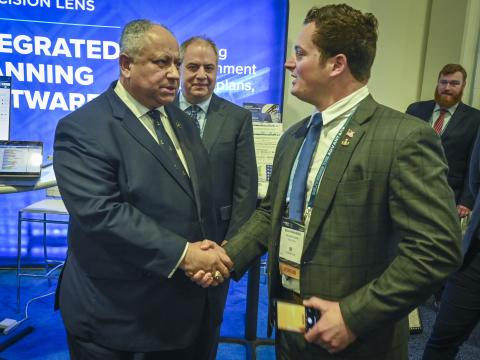SBA Finalizes Rules on New Governmentwide Mentor-Protege Program
The Small Business Administration (SBA) has simplified several rules for its government-wide federal mentor-protege program, but introduced changes that could be too constraining for both big and small businesses.
The Small Business Administration (SBA) has simplified several rules for its government-wide federal mentor-protege program, but introduced changes that could be too constraining for both big and small businesses.
Throughout the summer, the SBA worked on rule changes that largely clones the agency’s 8(a) Business Development mentor-protege program after Congress granted the agency authority to streamline the program across all government agencies as part of the 2013 National Defense Authorization Act.
The program now is open to all small businesses, a significant departure from the program that catered solely to businesses classified as 8(a), or small and disadvantaged, said Jonathan Williams, an attorney with PilieroMazza PLLC in Washington, D.C., who has 15 years of experience advising contractors on a wide range of government contracting matters.
The new rules went into effect August 24, but the SBA will not begin accepting applications until October 1. The SBA will continue to manage its 8(a) program separately from the new, expanded mentor-protege endeavor, which facilitates relationships between small and large businesses and provides incentives for bigger federal contractors to team with smaller businesses for access to federal work that otherwise would be off limits.
For the protege, the idea is that all small businesses will be able to receive various types of help from mentors, from financial to proposal writing, staffing and management assistance, Williams said. For mentors, incentives under the new rules include SBA approval to own up to 40 percent of equity interest in the protege firm and access set-aside contracts with any small business through a joint venture, not just 8(a). “If you’re a large business, you cannot be in a joint venture for a set-aside contract unless you’re in a mentor-protege relationship,” Williams said Tuesday during a meeting of AFCEA International’s Small Business Committee. “Until now, as a mentor, you could only look for 8(a) firms to mentor and do joint ventures with. But now, as a prospective mentor, you can look for small businesses, women-owned small businesses, veteran owned firms—any type of small business.”
The rule change establishes a universal mentor-protege program for all federal agencies with the SBA managing the streamlined effort across the government—except for the program run by the Defense Department, which will continue to manage its own mammoth venture, Antonio Doss, district director of the SBA’s Washington Metropolitan Area District Office, said earlier this year.
Proteges generally can have only one mentor at a time, which could be limiting in terms of growth potential, especially for businesses looking at diversifying industries, Williams said. Additionally, businesses wanting to be part of the SBA effort cannot be part of mentoring programs with other federal agencies, such as the DOD. The Department of Homeland Security runs a robust program, and it is unclear at this time whether it will remain separate from the SBA program.
“One of the most significant points is that [small businesses] can only have two mentor-protege relationships—ever,” Williams pointed out. “That is something that we fought against. Why put an arbitrarily numerical limitation on it? The SBA is concerned about mentors taking advantage of proteges, and I understand their concern, but I’m afraid this is too limiting.” Given the limitation, he recommends small businesses do their due diligence and research to ensure they select the optimal mentor.
The new rules also simplify the mentor eligibility process, with the SBA migrating toward a more holistic assessment of a firm’s overall capability to provide mentoring, Williams said. For example, there is a reduced “laser focus” on the mentor’s financial standing. The SBA still will seek letters of recommendation, but now, mentors can be large or small businesses. And while the SBA will prefer mentors have no more than one protege at a time, it will allow up to three as long as the agreements do not adversely impact anyone of the three proteges. The initial agreement is capped at a three-year term, with one option for an additional three years that must be SBA-approved for a maximum six-year term.
Non-profits are not eligible to be mentors.
Applications can only be submitted electronically and applicants must do the following:
- Submit a mentor-protege agreement consistent with SBA’s rules
- Register with SAM.gov
- Complete online training module
- Submit required documents to substantiate eligibility
The change is one part of a comprehensive culture shift at the SBA that includes plans to modernize a number of processes, Doss had said.




